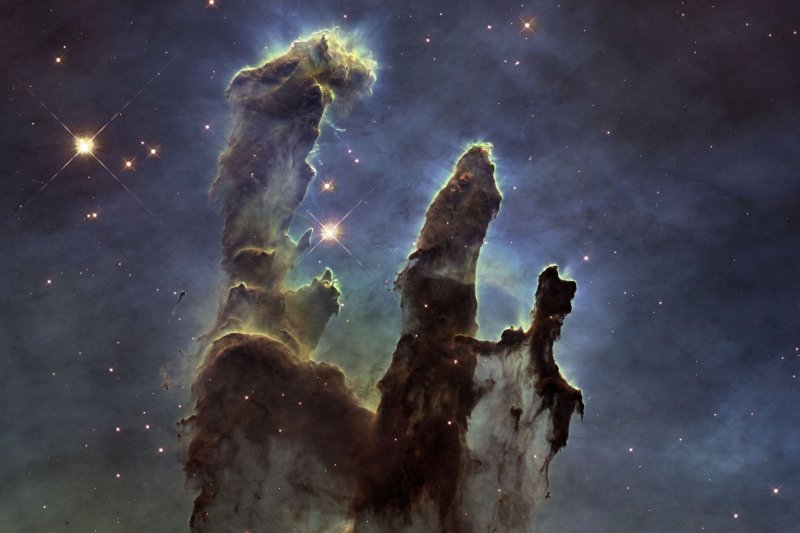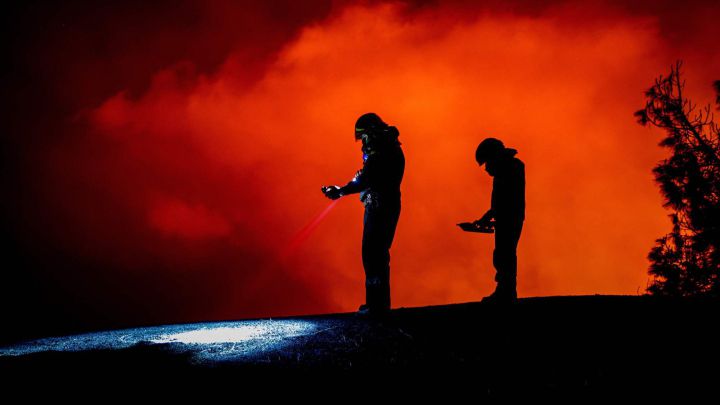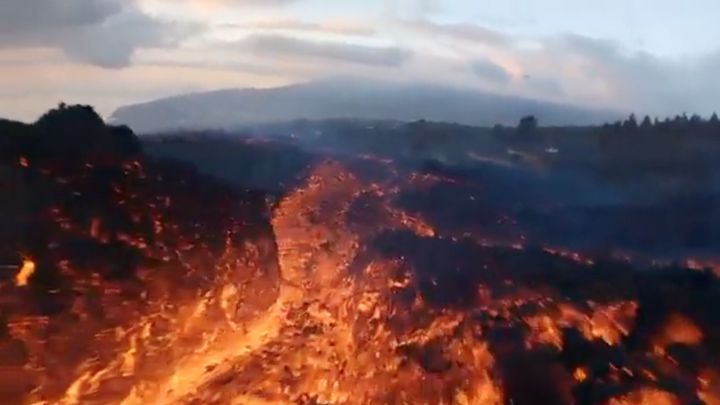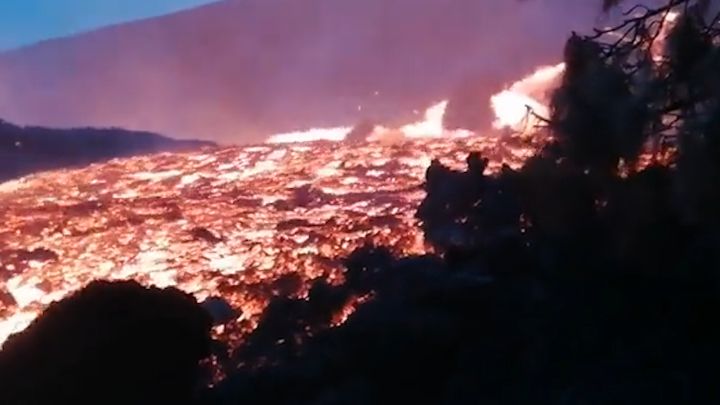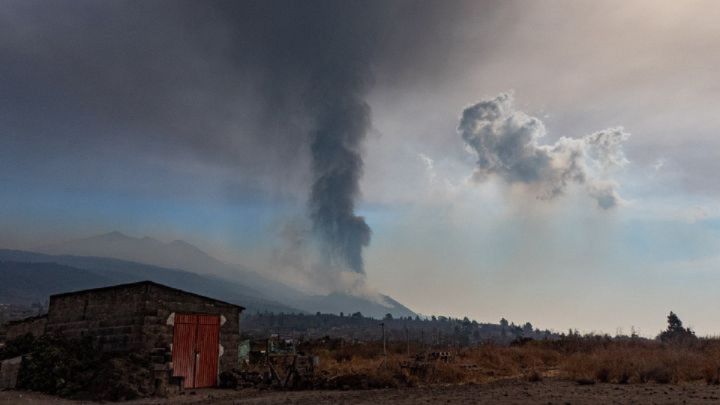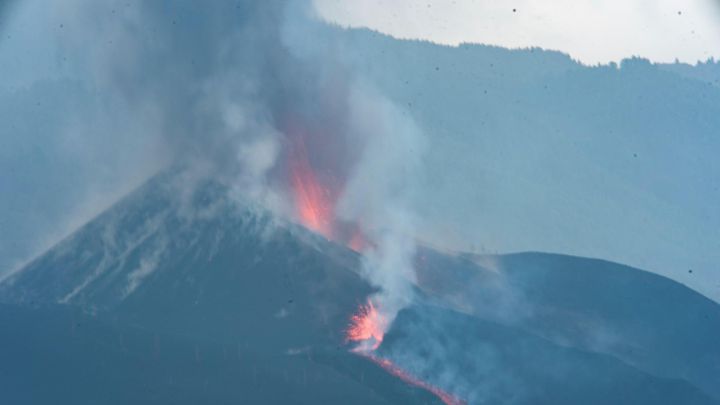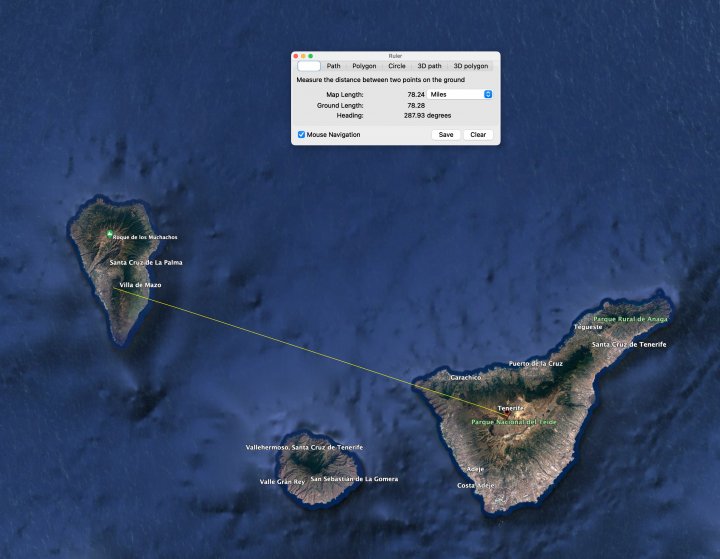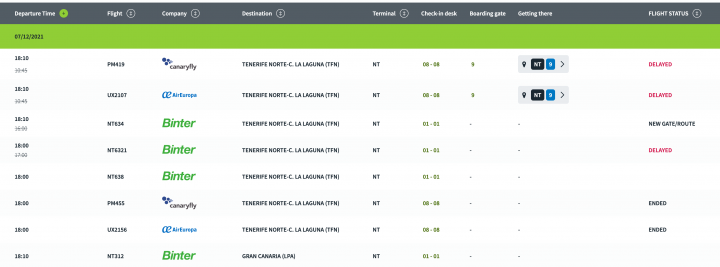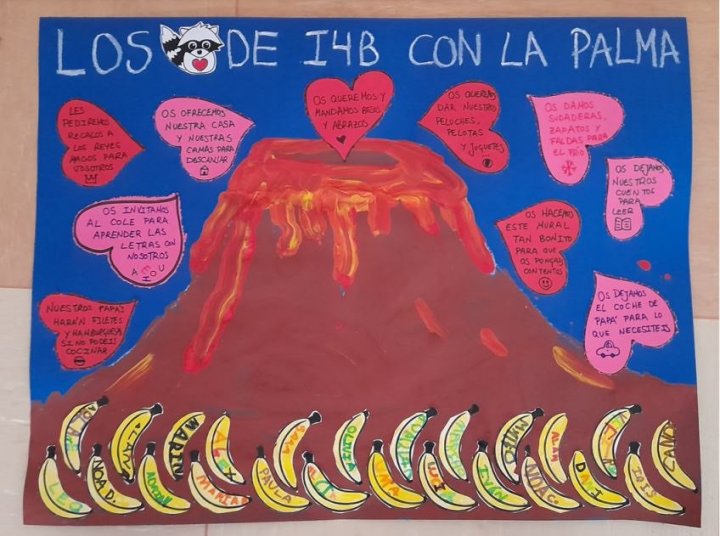CAPITALI$M IS CRISIS EVEN IN CHINA
China's Evergrande: How will a 'controlled demolition' impact the economy?
Evergrande is a real estate giant with a presence in over 280 Chinese cities (AFP/Jade Gao)
Beiyi SEOW
Wed, December 8, 2021,
As Chinese real estate behemoth Evergrande reportedly prepares for a government-backed mega-restructure, here is an explainer on what Beijing's bid to limit a contagion could mean for the wider economy:
- What happened to Evergrande? -
The Chinese government sparked a crisis in the property industry when it launched a drive last year to curb excessive debt among real estate firms as well as rampant consumer speculation.
Evergrande, a real estate giant with a presence in over 280 Chinese cities, was the most prominent developer to pay the price for Beijing's clampdown.
More than $300 billion in debt, it teetered for months on the edge of default, returning each time from the brink thanks to a last-minute repayment.
But according to Bloomberg it has now missed a 30-day grace period on overdue coupon payments worth $82.5 million, while agency S&P Global Ratings has said a default now "looks inevitable".
- What happens now? -
After Evergrande warned last week it may not be able to meet its financial obligations, the local government in Guangdong -- where the firm is headquartered -- summoned billionaire chairman Hui Ka Yan, and said they will send a "working group" to the company.
Analysts said this moment signalled the formal start of the giant's debt restructuring -- a process that will likely take years.
- What does it mean for investors? -
Signs that the state is taking a bigger role in Evergrande's future have eased investor concern of a disorderly collapse.
"It's pretty clear that the state is seriously involved in managing the situation," Shehzad Qazi, managing director of data analytics firm China Beige Book, told AFP.
It will "ultimately be a 'controlled demolition'," Qazi added.
But bondholders are likely to face deep haircuts, and even if restructuring provide some answers, the broader impact of Beijing's sweeping property crackdown remains to be seen.
- What about other Chinese developers? -
At least 10 property firms have defaulted on bonds since concerns started to grow over Evergrande in June.
Hong Kong-listed Sunshine 100 defaulted after missing a deadline to make $179 million in payments this week, and Kaisa failed in a debt swap to buy crucial time for raising cash.
Property firms made up 36 percent of the $10.2 billion of offshore bonds that Chinese borrowers defaulted on this year, Bloomberg said.
- How will China's economy be impacted? -
The People's Bank of China said last week that Evergrande's problems came from its own "poor management and blind expansion" in a bid to reassure investors.
Regulators have said they would safeguard the rights of homebuyers, while the banking and insurance authority stressed the need to "focus on satisfying mortgage needs for first homes."
With the local government sending a working group to the firm, the Evergrande crisis has drawn parallels with government intervention in other indebted companies, notably aviation conglomerate HNA Group.
HNA's restructuring did not cause investor panic -- although Evergrande's higher profile means this time will likely prove a bigger challenge.
But whatever happens to Evergrande, Beijing's broader clampdown has already had a major impact on the property sector and deepened worries over key firms' financial health, bringing home sales and prices down.
- And what about the global economy? -
A slowdown in the Chinese real estate sector, which accounts for a significant proportion of the country's economic output, could have ripple effects on global growth.
Evergrande's woes have rocked stock markets -- and the real estate sector makes up much of distressed dollar-denominated debt internationally.
But an Evergrande default has long been expected, and fears over a "Lehman moment" -- a reference to the Wall Street titan whose collapse prompted panic worldwide during the 2008 global financial crisis -- have already been dismissed.
bys/rox/ser
Kaisa share suspension furthers China property sector fears

Kaisa is China's 27th-largest real estate firm -- but one of its most indebted (AFP/JADE GAO)
Jerome TAYLOR
Tue, December 7, 2021
Chinese property firm Kaisa suspended share trading in Hong Kong on Wednesday as questions swirl over its ability to make repayments and contagion spreads within the country's debt-ridden real estate sector.
The Chinese government sparked a crisis within the property industry when it launched a drive last year to curb excessive debt among real estate firms as well as rampant consumer speculation.
Companies that had accrued huge debt to expand suddenly found the taps turned off and began struggling to complete projects, pay contractors and meet both domestic and foreign repayments.
Kaisa, China's 27th-largest real estate firm in terms of sales but one of its most indebted, became the latest company to spook investors when it announced on Friday that it had failed in a bid for a debt swap that would buy it crucial time.
On Wednesday morning the firm announced it was suspending trading in Hong Kong, where it is listed, "pending the release by the Company of an announcement containing inside information".
It is the second time the company has suspended trading in the last month.
Kaisa last month announced a plan to delay the repayment timeline for some of its bonds, offering an exchange for at least $380 million of notes, which would have given it some room to find money further down the line.
But the offer failed to win the 95 percent approval from bondholders needed for the plan to go ahead.
The company currently has some $11.6 billion of dollar notes outstanding. It previously defaulted on a dollar debt in 2015, becoming the first Chinese developer to do so.
The most indebted Chinese property firm is Evergrande, which set off the current confidence crisis earlier in the summer.
The Shenzhen-based behemoth racked up an eye-watering $300 billion in loans before Beijing began to rein in the sector.
- Mega-restructure -
On Tuesday, Evergrande missed a deadline to repay some of its overseas creditors, raising the prospect of it defaulting as it prepares for a government-backed mega-restructure.
Bloomberg News reported some of the $82.5 million in overdue coupon payments it owed by the end of Tuesday -- when a 30-day grace period ran out -- remained unpaid.
Ratings group S&P has predicted that a default by Evergrande is now "inevitable".
Questions have swirled over whether Evergrande is simply too big to be allowed to fail, given its collapse could send shock waves through the wider Chinese economy.
But signs now point to Beijing being willing to close the chapter on the 25-year-old real estate empire that has typified China's breakneck growth in recent decades.
After Evergrande said Friday it may not be able to meet its financial obligations, the government summoned the company's founder and announced several moves that have given the clearest picture yet of Beijing's plans to end the crisis.
A new seven-strong "risk management committee" has been set up to manage the restructuring. Only two executives from the company are on the committee -- others include officials from state entities.
Guangdong's provincial government is also sending a working team to the company, which analysts at Jefferies said indicated a "potential takeover of Evergrande".
Evergrande has yet to comment on the restructuring.
Kaisa and Evergrande have become the most visible faces of the debt crunch within China's property sector but defaults have rippled throughout the sector.
According to Bloomberg News, at least 10 lower-rated real estate firms have now defaulted on onshore or offshore bonds since the summer.
So far this year, Chinese borrowers have defaulted on a record $10.2 billion of offshore bonds, Bloomberg reported, with real estate firms accounting for 36 percent of those non-repayments.
Wealthy owners of at least seven Chinese real estate companies have also sold off some of their own luxury assets in recent weeks to help prop up their firms, Bloomberg added.
But the latest troubles within the property sector did little to ruffle regional stock markets on Wednesday.
Asian markets were mostly up across the region, including in Shanghai, while Hong Kong was trading flat by the lunchtime break.
jta/leg

Kaisa is China's 27th-largest real estate firm -- but one of its most indebted (AFP/JADE GAO)
Jerome TAYLOR
Tue, December 7, 2021
Chinese property firm Kaisa suspended share trading in Hong Kong on Wednesday as questions swirl over its ability to make repayments and contagion spreads within the country's debt-ridden real estate sector.
The Chinese government sparked a crisis within the property industry when it launched a drive last year to curb excessive debt among real estate firms as well as rampant consumer speculation.
Companies that had accrued huge debt to expand suddenly found the taps turned off and began struggling to complete projects, pay contractors and meet both domestic and foreign repayments.
Kaisa, China's 27th-largest real estate firm in terms of sales but one of its most indebted, became the latest company to spook investors when it announced on Friday that it had failed in a bid for a debt swap that would buy it crucial time.
On Wednesday morning the firm announced it was suspending trading in Hong Kong, where it is listed, "pending the release by the Company of an announcement containing inside information".
It is the second time the company has suspended trading in the last month.
Kaisa last month announced a plan to delay the repayment timeline for some of its bonds, offering an exchange for at least $380 million of notes, which would have given it some room to find money further down the line.
But the offer failed to win the 95 percent approval from bondholders needed for the plan to go ahead.
The company currently has some $11.6 billion of dollar notes outstanding. It previously defaulted on a dollar debt in 2015, becoming the first Chinese developer to do so.
The most indebted Chinese property firm is Evergrande, which set off the current confidence crisis earlier in the summer.
The Shenzhen-based behemoth racked up an eye-watering $300 billion in loans before Beijing began to rein in the sector.
- Mega-restructure -
On Tuesday, Evergrande missed a deadline to repay some of its overseas creditors, raising the prospect of it defaulting as it prepares for a government-backed mega-restructure.
Bloomberg News reported some of the $82.5 million in overdue coupon payments it owed by the end of Tuesday -- when a 30-day grace period ran out -- remained unpaid.
Ratings group S&P has predicted that a default by Evergrande is now "inevitable".
Questions have swirled over whether Evergrande is simply too big to be allowed to fail, given its collapse could send shock waves through the wider Chinese economy.
But signs now point to Beijing being willing to close the chapter on the 25-year-old real estate empire that has typified China's breakneck growth in recent decades.
After Evergrande said Friday it may not be able to meet its financial obligations, the government summoned the company's founder and announced several moves that have given the clearest picture yet of Beijing's plans to end the crisis.
A new seven-strong "risk management committee" has been set up to manage the restructuring. Only two executives from the company are on the committee -- others include officials from state entities.
Guangdong's provincial government is also sending a working team to the company, which analysts at Jefferies said indicated a "potential takeover of Evergrande".
Evergrande has yet to comment on the restructuring.
Kaisa and Evergrande have become the most visible faces of the debt crunch within China's property sector but defaults have rippled throughout the sector.
According to Bloomberg News, at least 10 lower-rated real estate firms have now defaulted on onshore or offshore bonds since the summer.
So far this year, Chinese borrowers have defaulted on a record $10.2 billion of offshore bonds, Bloomberg reported, with real estate firms accounting for 36 percent of those non-repayments.
Wealthy owners of at least seven Chinese real estate companies have also sold off some of their own luxury assets in recent weeks to help prop up their firms, Bloomberg added.
But the latest troubles within the property sector did little to ruffle regional stock markets on Wednesday.
Asian markets were mostly up across the region, including in Shanghai, while Hong Kong was trading flat by the lunchtime break.
jta/leg
China unveils package to boost economy as Evergrande teeters
Martin Farrer
Martin Farrer
THE GUARDIAN
12/7/2021
China’s politburo has signalled measures to kickstart the faltering economy as the crisis gripping the country’s debt-laden property sector continued to blight prospects for growth.© Provided by The Guardian Photograph: Greg Baker/AFP/Getty Images
President Xi Jinping’s senior leadership committee rubber-stamped a plan from the central bank on Monday for more targeted lending to businesses and outlined support for the housing market.
The People’s Bank of China (PBOC) said it would cut the reserves most banks must hold by 0.5 percentage points, releasing another 1.2tn yuan ($188bn) into the economy, the central bank said in a statement
China’s politburo has signalled measures to kickstart the faltering economy as the crisis gripping the country’s debt-laden property sector continued to blight prospects for growth.© Provided by The Guardian Photograph: Greg Baker/AFP/Getty Images
President Xi Jinping’s senior leadership committee rubber-stamped a plan from the central bank on Monday for more targeted lending to businesses and outlined support for the housing market.
The People’s Bank of China (PBOC) said it would cut the reserves most banks must hold by 0.5 percentage points, releasing another 1.2tn yuan ($188bn) into the economy, the central bank said in a statement
.

© Photograph: Greg Baker/AFP/Getty Images China’s real estate sector – once a key driver of growth – has been struggling recently.
Related: China Evergrande shares hit record low as it edges closer to default
Leaders had also agreed to “promote the construction of affordable housing, support the commercial housing market and better meet the reasonable housing needs of buyers”, Xinhua state news agency said.
Attendees at the Monday meeting chaired by Xi said the housing moves would “promote the healthy development and virtuous cycle of the real estate industry”, according to Xinhua.
Despite the positive read-out from the politburo meeting, the country’s second-biggest property developer, Evergrande, was inching ever nearer to what could be the biggest failure in Chinese corporate history.
It needed to pay $82.5m in bond repayments by midnight New York time on Monday in order to avoid an automatic default. But some bondholders did not receive coupon payments by the deadline, four people with knowledge of the matter told Reuters on Tuesday.
Although Evergrande has faced three similar deadlines on offshore bonds since October and made each one at the last minute, it was less clear that it was going to make the payments this time.
A statement from the company on Monday evening said that in the light of its financial problems it was forming a risk management committee to “mitigate and eliminate future risks”. The statement helped stabilise its shares on Tuesday after dropping 20% in the previous session. It followed a weekend statement from the company said it might not be able to repay some of its $300bn debts.
A default would trigger cross-defaults on all the company’s about $19bn of dollar bonds in international capital markets and put Evergrande at risk of becoming China’s biggest-ever defaulter, which would ripple through the property sector and beyond, further rattling global investor confidence.
But most analysts now expect to have to undergo a significant restructuring to spread its debts throughout the economy.
Investors are also concerned about a potential default by Kaisa Group Holdings Ltd, which faces a $400m bond maturity on Tuesday. After Evergrande, it owes the most to foreign bondholders, with debts of $12bn.
Another Chinese developer, Sunshine 100 China Holdings, said on Sunday that it had missed a deadline to repay $179m in principal and interest payments on a 10.5% bond.
China’s economy is not growing as quickly as expected as it faces headwinds from a disrupted global economy, continued Covid outbreaks and the slowing housing market – once a key driver of growth but which is now seeing a string of defaults.
In October, the IMF lowered its forecasts for China’s growth to 5.6% in 2022, which is huge by the standards of developed nations but modest by recent Chinese standards.
The IMF’s managing director, Kristalina Georgieva, said on Monday that China has an important part to play in the global economy as it recovers from Covid-19, but its growth was slowing.
“China achieved a truly remarkable recovery, but its growth momentum has been slowing notably. As China is a vital engine for global growth, taking strong actions to support high-quality growth will help not only China, but the world,” Georgieva said.
Analysts at UBS said Monday’s policy announcements were a “clear signal” of monetary easing but others were less sure and noted that the PBOC insisted that monetary policy would remain prudent.
Julian Evans-Pritchard, China economist at Capital Economics, said the move was an “opening of the fiscal taps, not a flood”, and that “this easing will cushion but not stop growth from slowing”.
However, he predicted that the PBOC would have to cut its main interest rate before long. “As economic activity continues to weaken and the PBOC becomes more serious about lowering corporate financing costs we think it will have to take further action, including policy rate cuts.”
Bill Bishop, a respected China expert and author of the Sinocism newsletter, said Xinhua reports about the politburo meeting had received “a lot of attention” but he did not believe it was a significant easing.
“I do not think that is a fundamental shift,” he wrote in his latest newsletter. “Policymakers are dealing with some significant problems in the property markets including – but far from limited to – Evergrande, and they do not want to crater the industry. Can they calibrate and avoid disaster? We are going to find out.”
Related: China Evergrande shares hit record low as it edges closer to default
Leaders had also agreed to “promote the construction of affordable housing, support the commercial housing market and better meet the reasonable housing needs of buyers”, Xinhua state news agency said.
Attendees at the Monday meeting chaired by Xi said the housing moves would “promote the healthy development and virtuous cycle of the real estate industry”, according to Xinhua.
Despite the positive read-out from the politburo meeting, the country’s second-biggest property developer, Evergrande, was inching ever nearer to what could be the biggest failure in Chinese corporate history.
It needed to pay $82.5m in bond repayments by midnight New York time on Monday in order to avoid an automatic default. But some bondholders did not receive coupon payments by the deadline, four people with knowledge of the matter told Reuters on Tuesday.
Although Evergrande has faced three similar deadlines on offshore bonds since October and made each one at the last minute, it was less clear that it was going to make the payments this time.
A statement from the company on Monday evening said that in the light of its financial problems it was forming a risk management committee to “mitigate and eliminate future risks”. The statement helped stabilise its shares on Tuesday after dropping 20% in the previous session. It followed a weekend statement from the company said it might not be able to repay some of its $300bn debts.
A default would trigger cross-defaults on all the company’s about $19bn of dollar bonds in international capital markets and put Evergrande at risk of becoming China’s biggest-ever defaulter, which would ripple through the property sector and beyond, further rattling global investor confidence.
But most analysts now expect to have to undergo a significant restructuring to spread its debts throughout the economy.
Investors are also concerned about a potential default by Kaisa Group Holdings Ltd, which faces a $400m bond maturity on Tuesday. After Evergrande, it owes the most to foreign bondholders, with debts of $12bn.
Another Chinese developer, Sunshine 100 China Holdings, said on Sunday that it had missed a deadline to repay $179m in principal and interest payments on a 10.5% bond.
China’s economy is not growing as quickly as expected as it faces headwinds from a disrupted global economy, continued Covid outbreaks and the slowing housing market – once a key driver of growth but which is now seeing a string of defaults.
In October, the IMF lowered its forecasts for China’s growth to 5.6% in 2022, which is huge by the standards of developed nations but modest by recent Chinese standards.
The IMF’s managing director, Kristalina Georgieva, said on Monday that China has an important part to play in the global economy as it recovers from Covid-19, but its growth was slowing.
“China achieved a truly remarkable recovery, but its growth momentum has been slowing notably. As China is a vital engine for global growth, taking strong actions to support high-quality growth will help not only China, but the world,” Georgieva said.
Analysts at UBS said Monday’s policy announcements were a “clear signal” of monetary easing but others were less sure and noted that the PBOC insisted that monetary policy would remain prudent.
Julian Evans-Pritchard, China economist at Capital Economics, said the move was an “opening of the fiscal taps, not a flood”, and that “this easing will cushion but not stop growth from slowing”.
However, he predicted that the PBOC would have to cut its main interest rate before long. “As economic activity continues to weaken and the PBOC becomes more serious about lowering corporate financing costs we think it will have to take further action, including policy rate cuts.”
Bill Bishop, a respected China expert and author of the Sinocism newsletter, said Xinhua reports about the politburo meeting had received “a lot of attention” but he did not believe it was a significant easing.
“I do not think that is a fundamental shift,” he wrote in his latest newsletter. “Policymakers are dealing with some significant problems in the property markets including – but far from limited to – Evergrande, and they do not want to crater the industry. Can they calibrate and avoid disaster? We are going to find out.”










